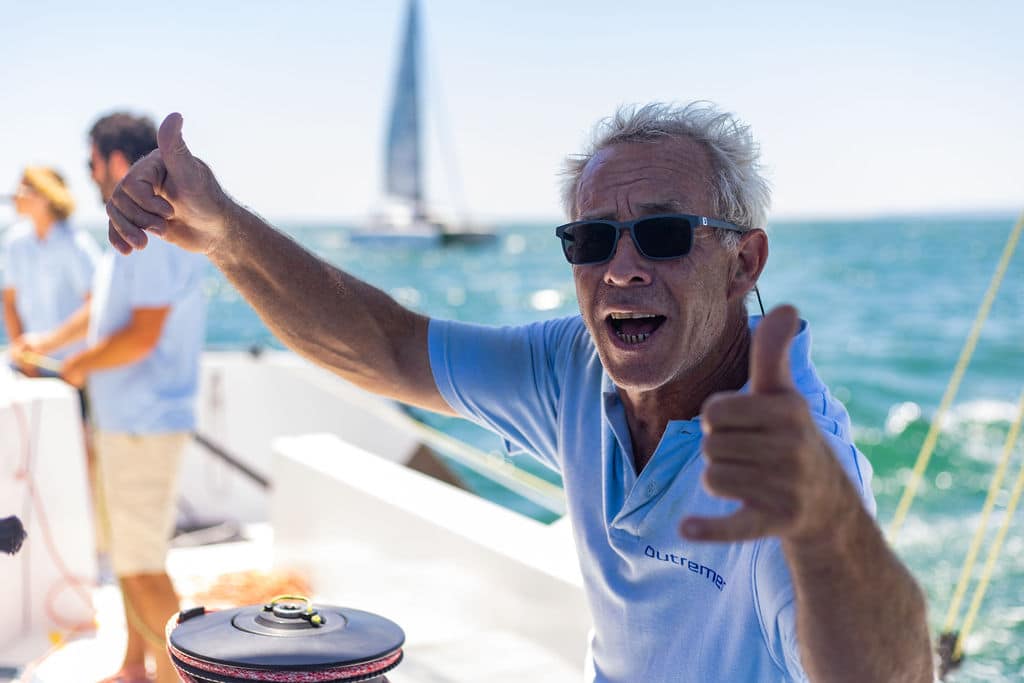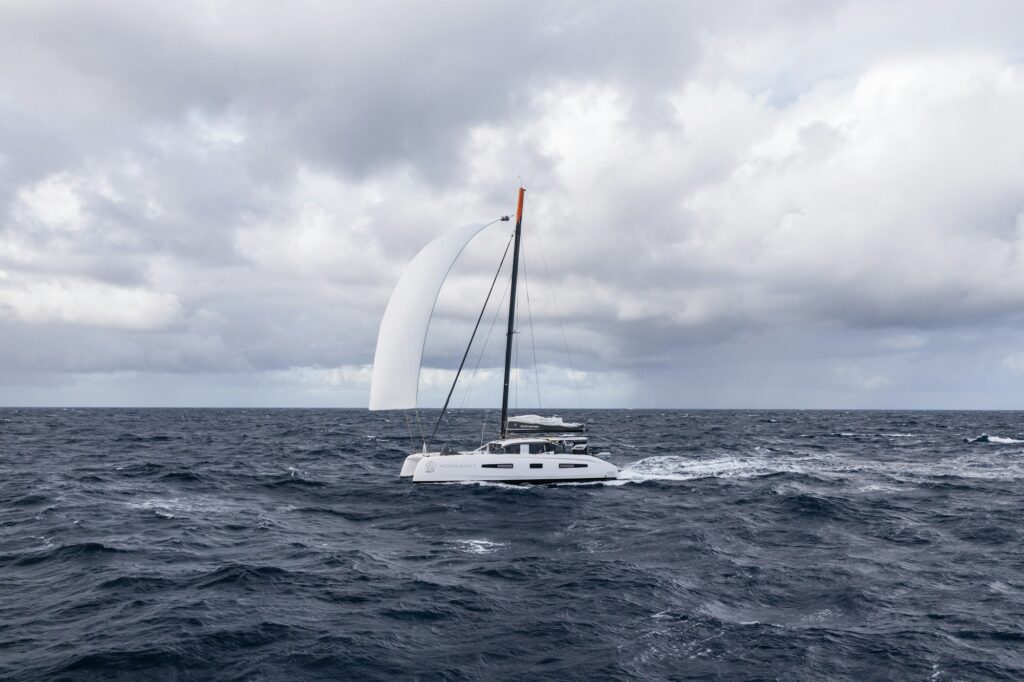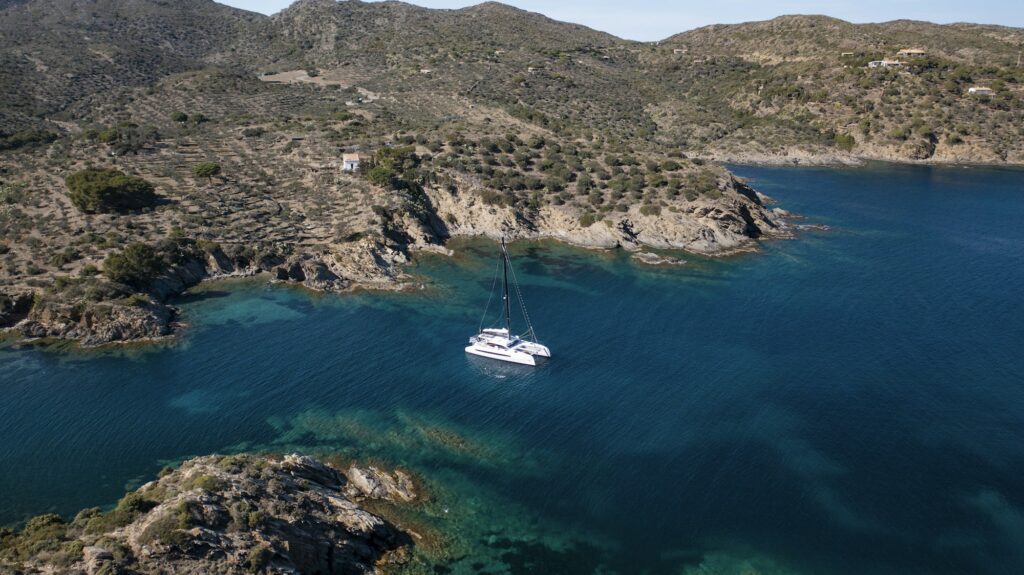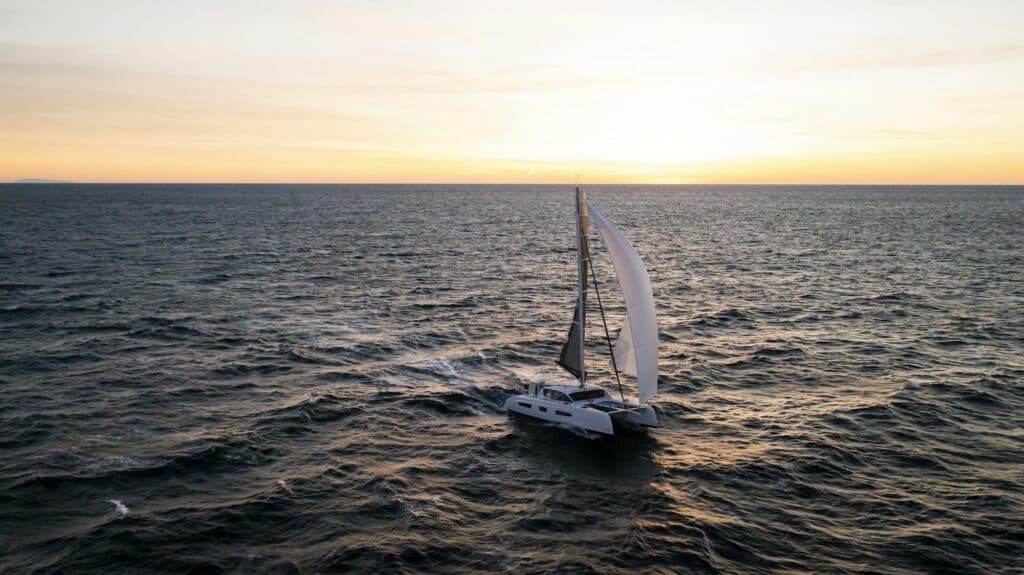
Author: Nikki Henderson
The definition of risk: “a situation involving exposure to danger.”
Blue water sailing is inherently risky. Therefore, it is no surprise that when I’m coaching future Outremer owners, questions tend to focus on worst case scenarios: what if I end up in heavy weather / MOB / don’t reef in time?
It can be hard to answer these questions succinctly. There are endless situations that one could be in at sea. I tend to begin with “well I would recommend X” and then unfortunately end up following a lot of appendices: “except when…” or “unless …” or “but only if ….”.
One approach that instructors often take is to teach students to avoid ending up in bad weather in the first place. This is an admirable starting point, and prevention is certainly better than cure. However, it is by no means fool proof.
Because sailing is unpredictable.
There will always be a squall we didn’t see on the radar. There will always be the catabatic wind that wasn’t in the forecast. There will always be rogue waves. There will always be mistakes. Not only is nature unpredictable, but so are humans. We are all fallible. Accepting that is critical.
What I like to try to avoid is giving a list of rules of exactly what to do and when – such as “you must reef when there is 21 knots of wind exactly” or “in big waves trailing lines is the only solution” – but more guide people towards making the decision for themselves. In other words, the ‘why’ is much more important than the ‘what’ when learning how to sail.
Our sport has no stable ground, no stillness, and no stop button. It is always shifting and changing. I’ve often said that one of the most beautiful aspects of sailing is the closeness to nature. A good day’s sailing can feel akin to dancing with a partner; moving in time together with nature, maintaining harmony and balance.

The best sailors have such a deep understanding of what is going on – and are so in tune with nature – that they are able to be flexible. They can shift, sway, and turn as mother nature does the same. You just have to watch the Olympic sailing to see this – the sailors are constantly moving their bodies and the sails in harmony with the forces affecting them.
Flexibility does not just make a good or a fast sailor. It makes for a safe sailor. How adaptable a sailor can be is directly relative to how safe they are likely to keep the boat. The more fluid they are, the more likely they are to adjust the sails, the boat, the crew and the plans appropriately for the conditions around them, and thus reduce the likelihood of a catastrophe.
Whilst attaining the reactivity of an Olympic sailor may feel out of reach, there are some simple things I recommend for anyone considering how to be an adaptable and thus safe sailor:
Mindset
Create a culture onboard of openness. To rely on one person alone to notice shifting conditions, shifting crew morale, shifting cloud cover, sea state, pressure – is foolish. In a basic sense – we all have to sleep!
Encourage curiosity. Encourage analysis. Encourage everyone to get involved. Do not shut down suggestions, however stupid they might appear. Host regular group discussions about what is going on, and what is expected for the future. Debrief anything that didn’t go according to plan and make changes if necessary to procedures off the back of the feedback.
A good starting point here is to chat through any maneuver with your crew before you do it and give time for questions. Another is to prioritise meeting once a day – no matter how tired you or the crew are – perhaps over a meal or tea – to discuss the expected conditions and review how the day went.
Keep jammers/clutches open
This is such an easy way to ensure that the boat and the sails are ready for you to adapt to changing conditions. Where possible, any lines that are the primary control for powering up or depowering the sails should be on winches with their relevant clutches open.
This means the mainsheet should always be on the winch with its clutch open – ready to depower easily. Any other active sheets should follow suit. The spinnaker halyard the same.
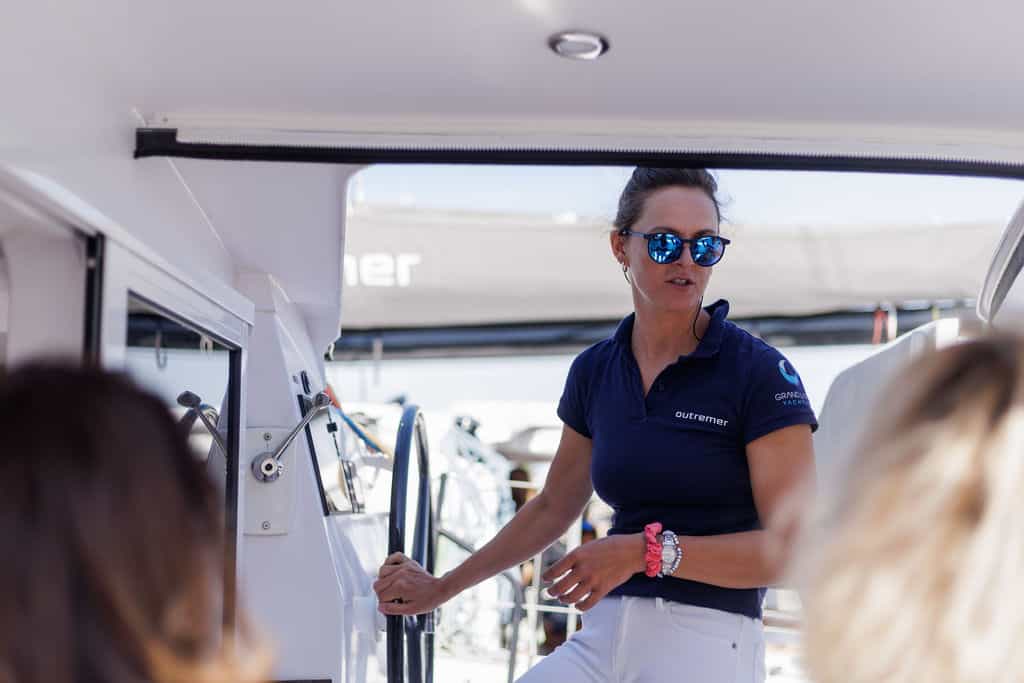
Tidy boat
In the same vein as above, a tidy boat is a safe boat. Ensure all the lines are flaked and ready to run. Keep an eye out that they don’t get stuck behind the sliding doors of your saloon, around the helm, or stuck in those strings that you hang them on.
One recommendation is to hang active ropes (the ones with the open jammers that are on the winches) on their associated winches. That will clear up the storage space for the remaining lines.
Instrument settings
Too much data on an instrument screen is very uninviting – particularly for a more novice sailor. Really have a think about what you need to see on the instrument screens and where it is displayed, so that everyone on board feels that they are in tune with the conditions – certainly in a numerical sense. This will ensure that it is not just the most experienced sailor who is noticing patterns and changes.
A couple of basic recommendations:
- True wind and apparent wind data is nice to have side by side
- Use a graphic option for wind as well as numerical – to appease different brains!
- Boat speed and speed over ground are generally not both needed
- If you are mid ocean, depth is not hugely relevant and can be removed (remember to turn it back on if there is a reef near, or landfall)
- True wind direction is extremely useful for monitoring wind shifts for a beginner sailor
- Sea temperature is very useful when sailing close to any major currents such as the Gulf Stream
Design your own Logbook
A regular logbook entry is a good way to encourage all the crew to be in tune with nature and what is going on with the boat. However, log books can often be badly designed for your boat. Consider designing your own with as much information as you like.
Some of my ideas:
- I like to have two columns for battery voltage for example: one for house and one for starter batteries in case of a starter battery drain.
- I like to have columns for the conditions: cloud cover, sea state, barometric pressure, humidity, sea temperature.
- A crew welfare column is great – just a general 1-10 scale on the overall vibe onboard.
- I like a column for whether the skipper (me) is resting. The crew should stay in tune with whether you are getting enough sleep – it can sometimes be hard to keep track and 3 hours sleep in 24 hours is not enough when you have to start making challenging decisions.
Create guidelines
A paradox I have noticed is that with clear well-defined boundaries, people feel freer. Creating standards for the boat is useful. So some ‘go-to’ reefing boundaries, some ‘go-to’ dagger board depths, and some ‘go-to’ sail choices is a good place to start. It takes some of the thinking and imagination out of decision making, which means that when conditions get fruity you can use your brain for the more complex lateral thinking – adjusting the rules for the unexpected changes that inevitably will occur.
For example, if you had a ‘go-to’ guideline that reef 3 should be put in when the wind was 30 knots – then you would put in reef 3 immediately if you saw gusts into the 30s. If then the wind increased to 45 knots, you will need to choose whether to surf downwind and hold the sail as it is, or whether to drop the main completely. Whatever the decision, you are in a much better position to adapt to that change if reef 3 is already in rather than if you were still umming and aahing about how much sail to drop. You have also saved that decision making energy for the more important decision.
Have fun
There can often be hesitation around changing plans, putting a reef in, dropping a spinnaker, putting out the drogue – because it is more “work” or too much effort. This hesitation could be the difference between catastrophe and safety.
I have fallen prey to these many times in my sailing career. Typically, the way I step out of this lazy mindset is to remind myself that sailing is fun. Doing things – sail changes, reefing, hoisting or dropping – is fun. And if it’s not fun, it will certainly be a learning experience. Focusing on the positive, rather than all the negatives, makes for a safe passage.
